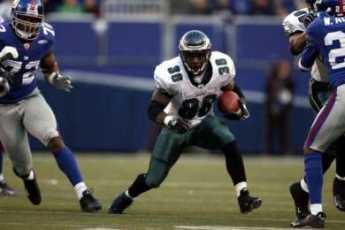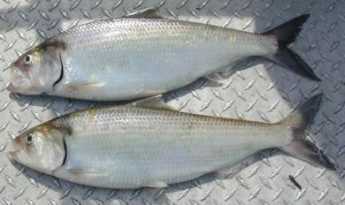Related Topics
Sporting Philadelphia
A few reflections about sports in and around Philadelphia.

Philadelphia Fish and Fishing
Less than a century ago, Delaware Bay, Delaware River, Schuylkill River, Pennypack Creek, Wissahickon Creek, and dozens of other creeks in this swampy region were teeming with edible fish, oysters and crabs. They may be coming back, cautiously.
City of Rivers and Rivulets
Philadelphia has always been defined by the waters that surround it.
Nature Preservation
Nature preservation and nature destruction are different parts of an eternal process.
Historical Motor Excursion North of Philadelphia
The narrow waist of New Jersey was the upper border of William Penn's vast land holdings, and the outer edge of Quaker influence. In 1776-77, Lord Howe made this strip the main highway of his attempt to subjugate the Colonies.
Shad
Nowadays, we have fresh fruit and vegetables all year Shadround. When produce isn't in season locally, we get it from Florida and California. When even those places are out of season, we bring it in from Chile. But the supermarket and its attendant supply chains are recent phenomena. Before the two World Wars, our food was pretty drab and monotonous during the winter. The first sign of the culinary joys of spring was shad.

|
| Shad |
Everybody loved, which everybody ate in its various forms. Shad was cheap because it was abundant; indeed, it seems difficult for the modern fisherman to imagine the huge quantities of fish that came up the rivers in early March. There was even a special term for fish weighing less than three pounds; at the fish market, such fish were thrown in, free. The term "Bushwacker" referred to the practice of beating the fish in the water to catch them. There once was a time when everybody knew how to use a shad dart, everyone could filet the bones, everyone had fried shad roe for breakfast. Spring, it was acumen in.
Unfortunately, the diversion of fresh water from upper Delaware to New York City, the dumping of waste from the oil refineries near Marcus Hook, and heaven know what other pollution, wiped out the annual shad run. Once a river's shad run is depleted, the main obstacle to getting it revived is the striped bass, who feast on the fingerlings coming back downriver from the spawning areas. You can still catch a few shad at the place where Amtrak crosses the Susquehanna, and a few hardy pioneer fish are starting to make it all the way to Lambertville. But the bulk of shad in Philadelphia markets now comes from North Carolina, and you better be alert to your timing or even they will be all gone before you've had any. There once was a time when a diner could be identified as a boorish stranger picking gingerly at the strong-tasting fish, or messing around dubiously with the unfamiliar roe served on toast. Nowadays, even lifelong Philadelphians will occasionally behave like that. You put lemon juice on the roe, dummy.
And you filet the fish. The bones of a shad are complex, going both forward and back within the flesh, so you have to be experienced to take a very sharp knife, twist, and turn, duck your shoulders and flip the fish, to produce boneless" shad0. If you don't know how to do that, you may have to bake the fish for hours to melt the bones and make it edible, but tasteless. Such products can be rescued by stuffing them with bread crumbs and spices. When things reach the point where no butcher knows how to produce boneless shad, our culture is on the edge of extinction. The big center for wholesale boned shad is Dill's in Bridgeton, NJ. There is, right now, only one place where you can obtain planked shad. That's the Salem Country Club (if you look respectable they let nonmembers in) out at the point on the Jersey side where Delaware takes a big bend before it flows down to the sea. A shad is planked by splitting it open and nailing it to a board, which is then placed before an open fire in the fireplace. Snap, crackle and wow.
Maybe the conservationists can get these fish back for us. The Eagles will certainly like that; had used to be what mainly sustained the American bird, and the depletion of the shad is part of the near-extinction of eagles. And maybe we can swallow our pride and teach the West Coast how to treat shad with respect. Shad was always an East-coast, Atlantic fish, and there is hardly a river left which has much shad. But someone transported some shad to the Sacramento, California area a century ago -- and they have flourished. Where the fish ladders of the Columbia River used to teem with salmon, nowadays they teem with shad. California likes to think it invents everything in America. Brace yourself for being told they invented shad.
Originally published: Monday, June 26, 2006; most-recently modified: Wednesday, June 05, 2019
| Posted by: G4 | Apr 24, 2009 9:41 PM |
I heard you expounding on de-boning a shad today on WHYY.
Erudite in the extreme, but you didn't get in a plug for the website!